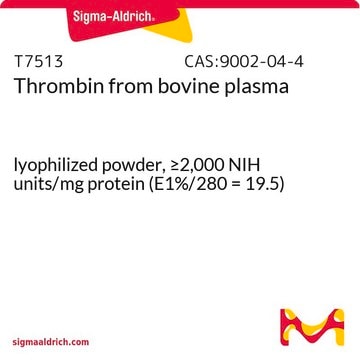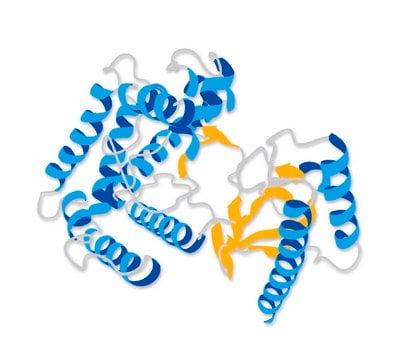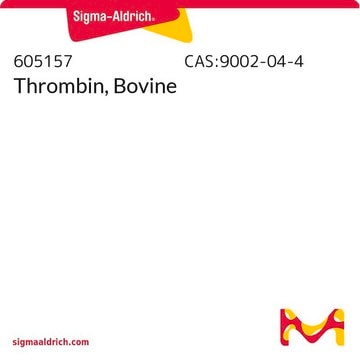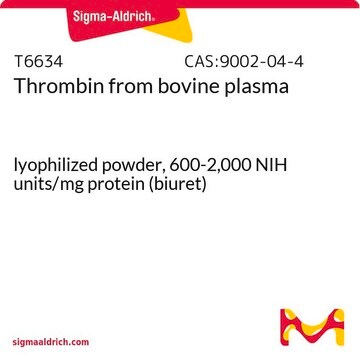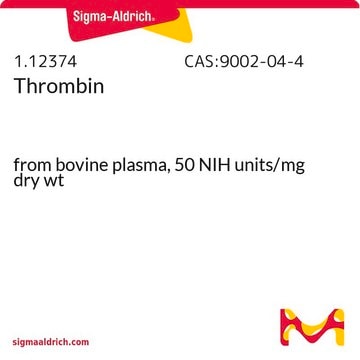The molecular weight is 37 kilodaltons (kDa).
SRP6556
Thrombin Active (High Activity) from bovine plasma
≥98% (SDS-PAGE), recombinant, lyophilized
Synonim(y):
Activated Factor IIa
Wybierz wielkość
652,00 zł
Wybierz wielkość
About This Item
652,00 zł
Polecane produkty
Nazwa produktu
Thrombin Active (High Activity) from bovine plasma, ≥98% (SDS-PAGE)
pochodzenie biologiczne
bovine plasma
Próba
≥98% (SDS-PAGE)
Formularz
lyophilized
siła działania
>1500 units/mg
masa cząsteczkowa
37 kDa
opakowanie
pkg of 10,000 units
pkg of 100,000 units
pkg of 1000 units
numer dostępu UniProt
Warunki transportu
wet ice
temp. przechowywania
−20°C
informacje o genach
bovine ... F2(280685)
Opis ogólny
Działania biochem./fizjol.
Postać fizyczna
Rekonstytucja
Kod klasy składowania
11 - Combustible Solids
Klasa zagrożenia wodnego (WGK)
WGK 3
Temperatura zapłonu (°F)
Not applicable
Temperatura zapłonu (°C)
Not applicable
Wybierz jedną z najnowszych wersji:
Certyfikaty analizy (CoA)
Nie widzisz odpowiedniej wersji?
Jeśli potrzebujesz konkretnej wersji, możesz wyszukać konkretny certyfikat według numeru partii lub serii.
Masz już ten produkt?
Dokumenty związane z niedawno zakupionymi produktami zostały zamieszczone w Bibliotece dokumentów.
Klienci oglądali również te produkty
-
What is the molecular weight expressed in kilodaltons (kDa)?
1 answer-
Helpful?
-
Active Filters
Nasz zespół naukowców ma doświadczenie we wszystkich obszarach badań, w tym w naukach przyrodniczych, materiałoznawstwie, syntezie chemicznej, chromatografii, analityce i wielu innych dziedzinach.
Skontaktuj się z zespołem ds. pomocy technicznej

